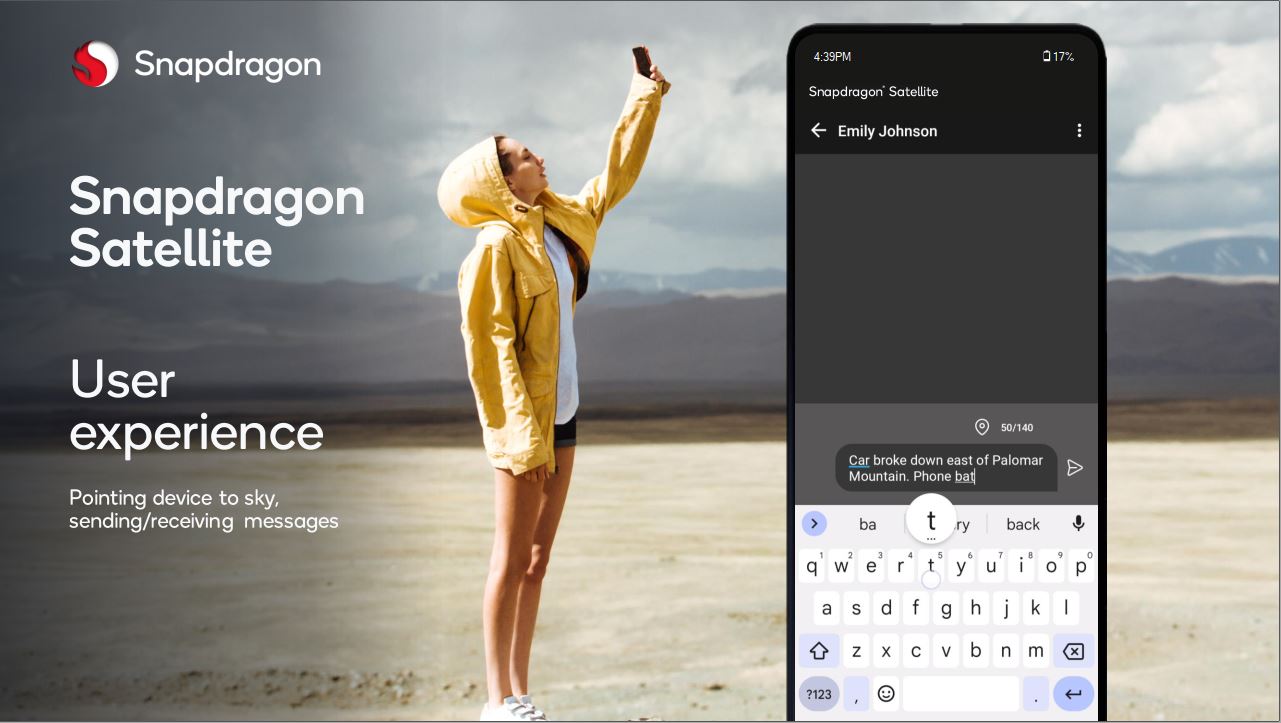Nothing, Motorola, Xiaomi, and others tap Qualcomm for satellite connectivity
Qualcomm is making satellite connectivity more of a thing.

What you need to know
- Satellite connectivity has been the latest mobile connectivity standard companies are investing in.
- Qualcomm announced Snapdragon Satellite in January to bring satellite connectivity to smartphones.
- At MWC 2023, Qualcomm announced several Android OEMs that will utilize Snapdragon Satellite.
While companies continue banking on slapping a "5G" on the name of every new phone, satellite connectivity has quickly become the latest trending communications standard, and it seems like everyone wants a piece of it. Qualcomm recently announced Snapdragon Satellite which aims to bring satellite connectivity to more smartphones, and its latest partnerships show that it already has a pretty good following.
At MWC 2023, Qualcomm announced that it is partnering with several Android OEMs that aim to utilize Snapdragon Satellite on future smartphones. This includes Motorola, Nothing, Xiaomi, Vivo, OPPO, and Honor.
"By incorporating Snapdragon Satellite into next-generation devices, our partners will be able to offer satellite messaging capabilities thanks to a mature and commercially available global LEO constellation, which can allow subscribers around the world to communicate outdoors with emergency service providers, as well as family and friends," says Francesco Grilli, Qualcomm's vice president of product management.
Satellite connectivity has been all the rage since Apple launched the capability on the new iPhone 14 series. While Apple's solution only allows it to be used in emergency situations, other companies and carriers have launched solutions that aim to give users the ability to send two-way texts in dead zone areas.
T-Mobile and Starlink are working together to enable satellite communication on smartphones, Samsung is bringing the capability to future Exynos modems, and Motorola just launched a new satellite Bluetooth dongle/hotspot for any smartphone powered by MediaTek and Bullitt Group.
Qualcomm's solution with Snapdragon Satellite sounds promising as it aims to bring built-in two-way communication to Android phones, such as emergency messaging, SMS texting, and other messaging apps. It will be available on phones utilizing the Snapdragon 8 Gen 2, although the company says the tech will expand to its lower-tier chips and "all upcoming 5G Modem-RF systems." As for when it will be available, Qualcomm expects it to launch in the second half of this year.

Samsung put an "Ultra" in the name because this phone is just that. It has a massive 120Hz display and built-in S Pen for note-taking, the latest Snapdragon chipset with all the power you could need, and an impressive 200MP camera for extra detail in every shot.
Be an expert in 5 minutes
Get the latest news from Android Central, your trusted companion in the world of Android

Derrek is the managing editor of Android Central, helping to guide the site's editorial content and direction to reach and resonate with readers, old and new, who are just as passionate about tech as we are. He's been obsessed with mobile technology since he was 12, when he discovered the Nokia N90, and his love of flip phones and new form factors continues to this day. As a fitness enthusiast, he has always been curious about the intersection of tech and fitness. When he's not working, he's probably working out.
